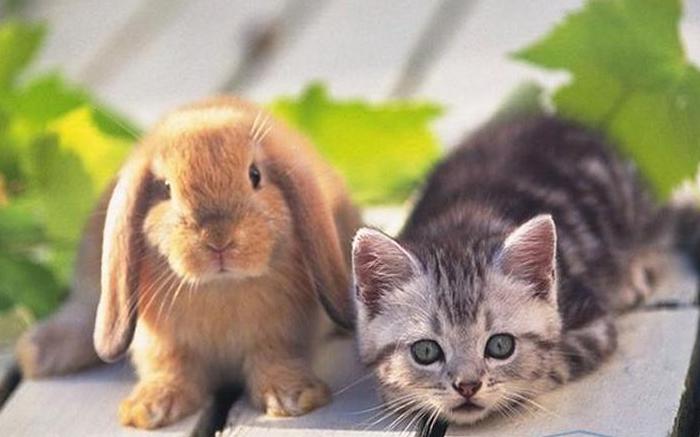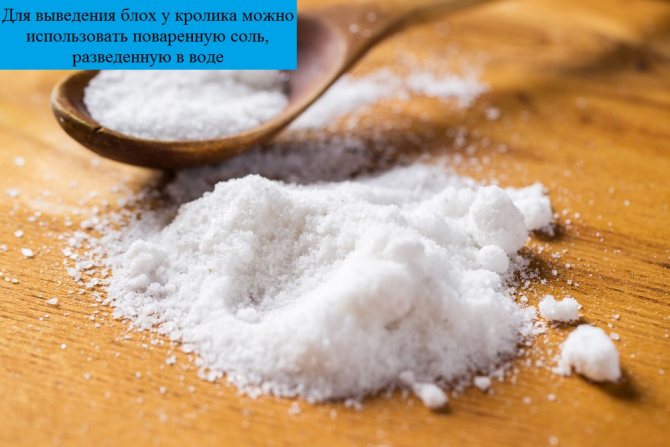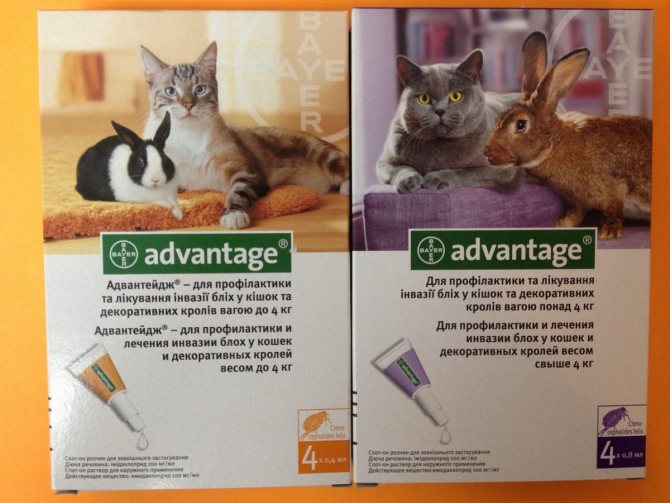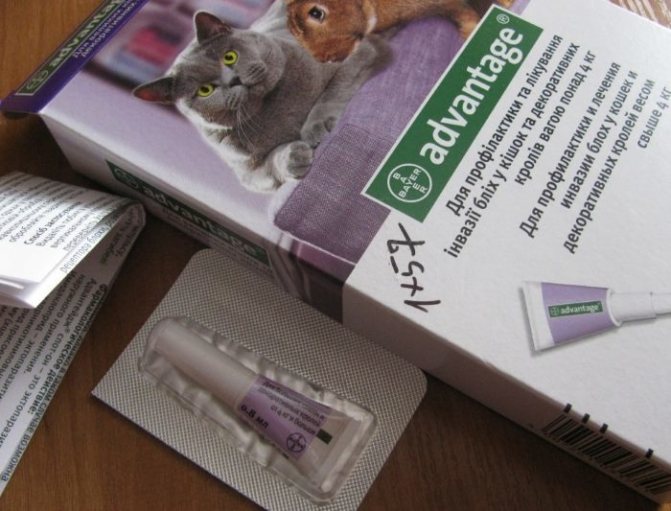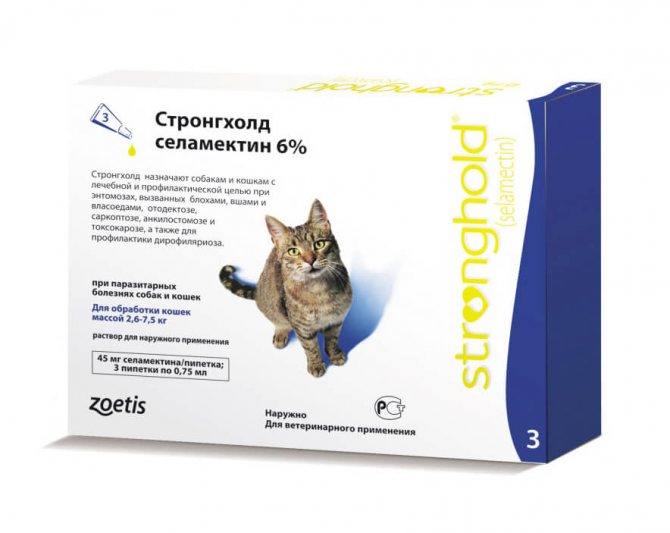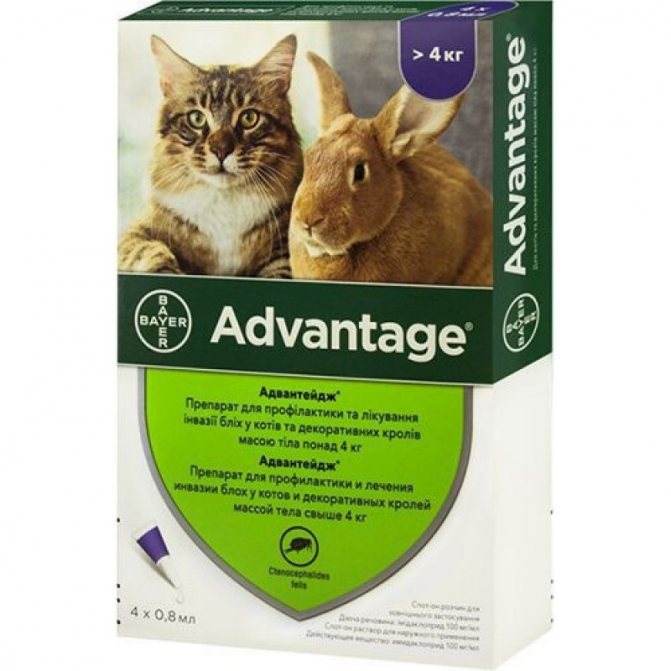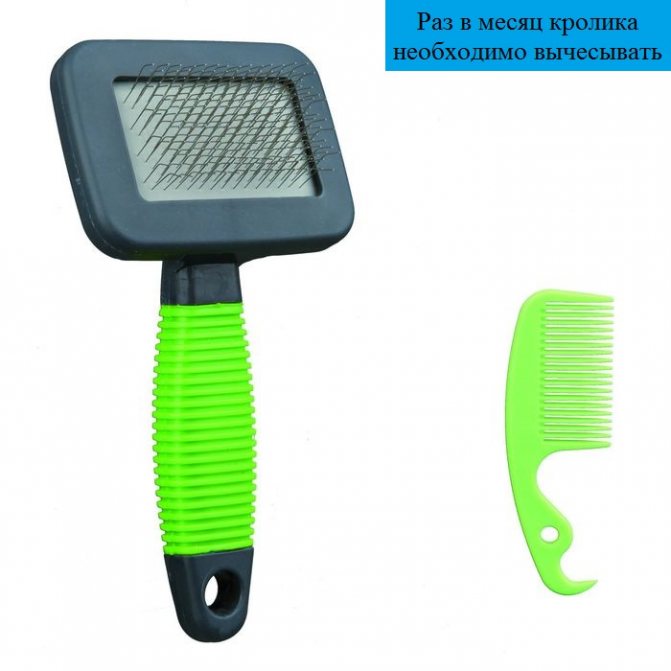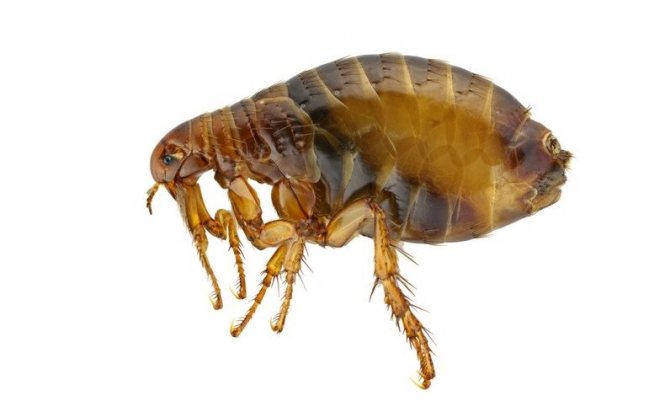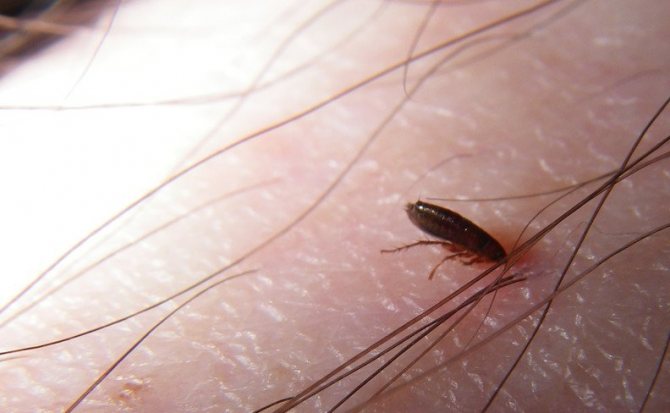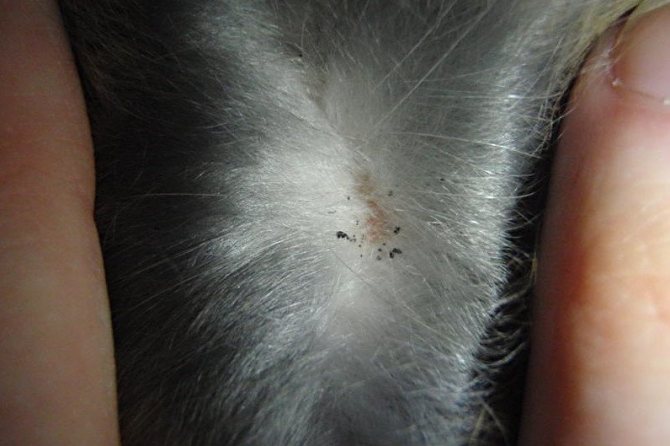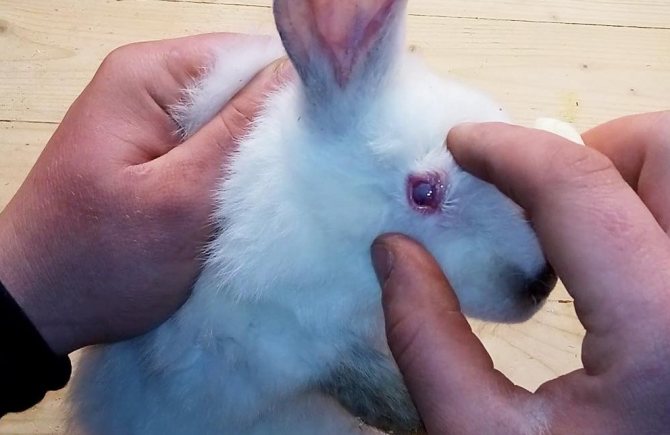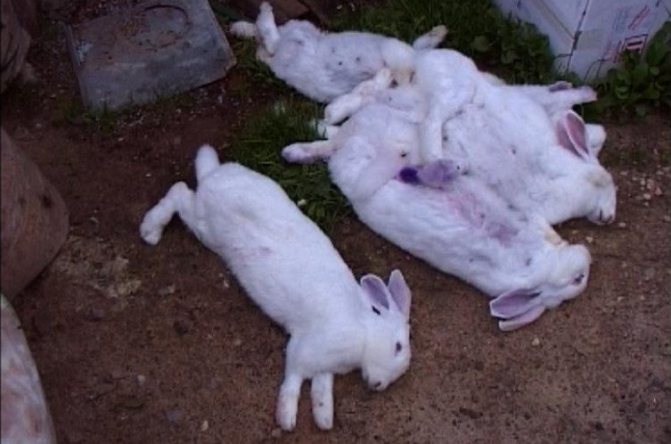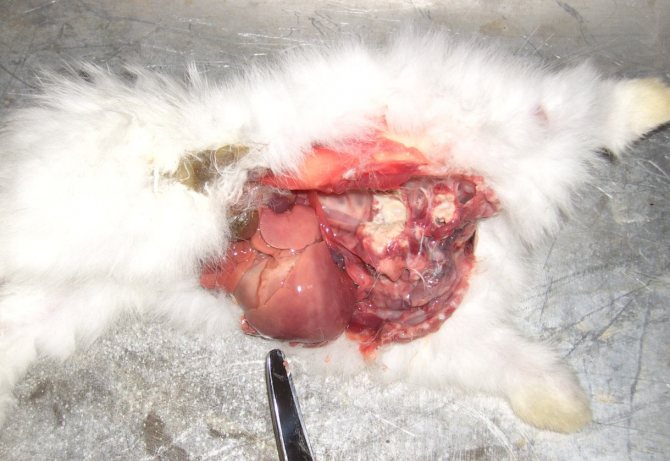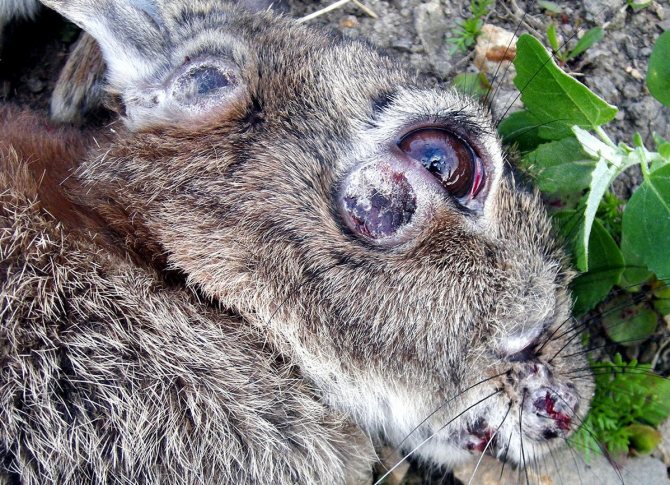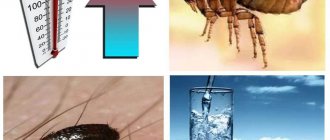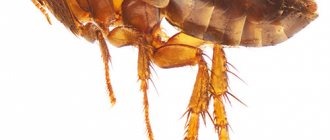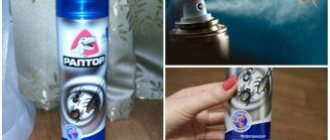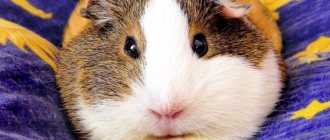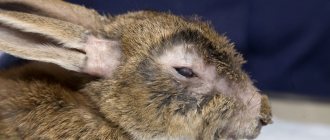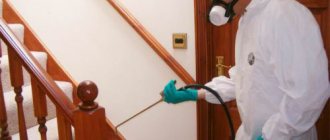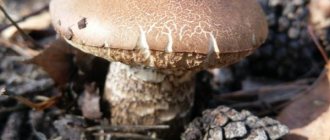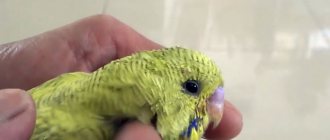Fleas are small insects invisible to the naked eye that do great harm to pets. They belong to the class of bloodsucking, parasites and can spread from one animal to another. Rabbits suffer from them no less than dogs and cats, so the article below describes how to carry out preventive measures, examinations for fleas. Since if you find full-fledged adult insects, then the disease develops already in the acute stage. And also given detailed instructions on how to remove them from the woolen cover of the eared ones. Do not forget that in addition to discomfort, itching, fleas can be carriers of serious infectious diseases.
Signs of a flea infestation
To recognize that a fluffy pet has fleas, you should watch the animal. The animal becomes more irritable, moves a lot and itches. He may lose his appetite.
You need to carefully examine the pet. Most often, insects are found on the withers, back and between the ears. In these places, the animal cannot comb them out. Fleas in rabbits look like small elongated dark-colored insects that randomly move by jumping over the skin of the animal. In addition to adults, small black dots can be found among the wool - flea excrement, and their oval-shaped eggs are white. Skin prone to insect bites is covered with red dots.
If pests are found, treatment should be started immediately. In advanced cases, the presence of a large number of fleas in a rabbit can lead to dermatitis, hair loss and even death.
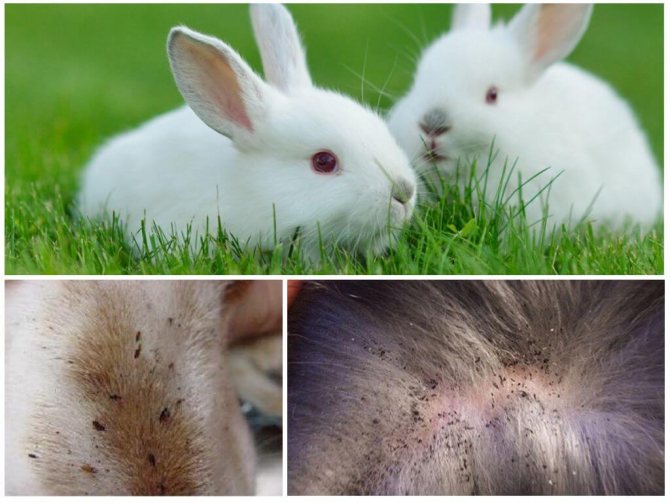
Fleas in rabbits
Treatment methods
Among modern drugs for animals, there are several types of flea products for rabbits. These include:
- insecticidal shampoos (Neguvon, Bolfo, Celandine Soft, Green Fort);
- flea drops (Frontline, Advantage, Green Fort NEO Bio);
- bromocyclene solution 0.5%.
Popular flea collars for dogs and cats are not suitable for use in rabbits. The insecticide applied to the product can poison them.
Bolfo shampoo
Bolfo is a popular flea treatment for ornamental rabbits. One application is enough to get rid of all bloodsuckers. All procedures should be carried out in protective rubber gloves.
- Foam a small amount of the product on the coat and leave for 10-15 minutes.
- Then rinse with warm water and comb thoroughly.
- Wipe the animal with a towel and place in a warm dry place until the fur is completely dry.
The price of the shampoo is about 300 rubles.
Our decorative dwarf rabbit has fleas. They let me out for a walk at the dacha - and this is the result. We bought a special Bolfo shampoo. We washed the pet, combed it out and dried it. No more insects were found on him.
Shampoo Celandine Mild
Domestic product specially designed for domestic animals and decorative rodents. It contains natural extracts of chamomile and wheat, which soften the effect of shampoo on the skin of pets.


Rabbit flea shampoos
The shampoo is applied to the damp coat, avoiding contact with the animal's eyes and mouth. After soaping, you need to wait 10 minutes, then thoroughly rinse the fur of the animal.After finishing bathing, dry off with a towel and comb out the hair from the dead parasites.
For prevention, it is recommended to repeat the procedure after 10-14 days. The price of the shampoo is 100 rubles.
Drops Frontline
An effective drug against parasites does not require washing the animal. To remove fleas from a decorative rabbit, you need to apply a small amount of drops to the withers. After that, it is necessary to prevent the animal from licking itself so that the insecticide does not enter the rabbit's mouth.
It is not recommended to take your pet outside and bathe it for two days. For prevention, you can repeat the treatment every one to two months. The cost of a bottle is about 400 rubles.
We have a decorative rabbit at home. His daughter sometimes takes him outside for a walk. And apparently there he picked up parasites. They immediately called the veterinarian, he advised Front Line drops. Bought on the same day and processed the wool to our Fuzzy. Everything worked out, he didn't itch anymore.
Bromocyclene solution
0.5% bromocyclene solution is prepared independently. The resulting composition will help remove fleas from rabbits at home. It is applied to the pet's fur and allowed to wait 15 minutes for insecticides to act on the parasitic fauna. Then wash off the product with warm water and comb out the insects. The price of the drug ranges from 100 to 200 rubles.
As a family, we started breeding rabbits for meat. And recently we faced a problem - all the animals got parasites. I didn't even know if rabbits have fleas, at first I thought it was some kind of disease. For processing, I was advised to prepare a solution of bromocyclene. All rabbits were treated with this remedy on the same day. After a couple of days, the bloodsuckers were gone. Now I know how to treat fleas in a rabbit.
Sprays
Parasitic infestations can be treated with sprays. Shake the bottle well and spray the pet against the fur from a distance of 10 cm. You should move from the tail to the head, protecting the eyes and ears from the spray.
Allow the animal to dry in the usual way without touching the coat and comb thoroughly with a fine-toothed comb. After the procedure, fleas in rabbits die.
Spray the cage from a distance of half a meter and discard the contaminated bedding.
Re-spray the bite crawl after 30 days or after bathing.
The drugs are combined with other antiparasitic agents if they are used at intervals of 2-3 days. The spray is not suitable for pregnant and lactating rabbits.
Acaromectin
Solution for external use based on ivermectin, a nerve insecticide. Used against lice, lice and fleas. The drug is low-toxic, applied in small doses to the ears, back of the head, neck and back.


Beaphar Immo Shield Spray
Suitable for pets - cats, dogs, rodents and rabbits, as well as for pest control of their habitats. The main active ingredient dimethicone acts on the respiratory system of fleas. To relieve itching, the spray contains aloe vera extract, which has wound healing and antibacterial effects.
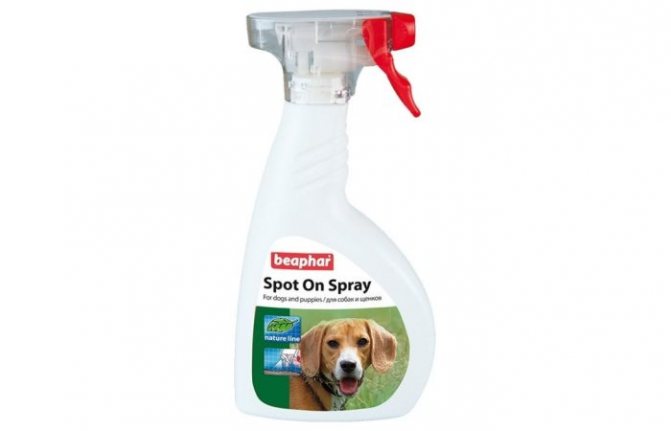

Collars
This is not the best flea remedy for rabbits. The tape is impregnated with dangerous drugs that have a toxic effect on the animal. The collar is not suitable for young animals, the animal can be poisoned or injured. Antiparasitic tape is worn for a walk to prevent infection and removed upon returning home.
Bars and Dana Ultra products containing fipronil are strictly prohibited. Rabbit breeders are leaning towards the German brand Bolfo based on propoxur.
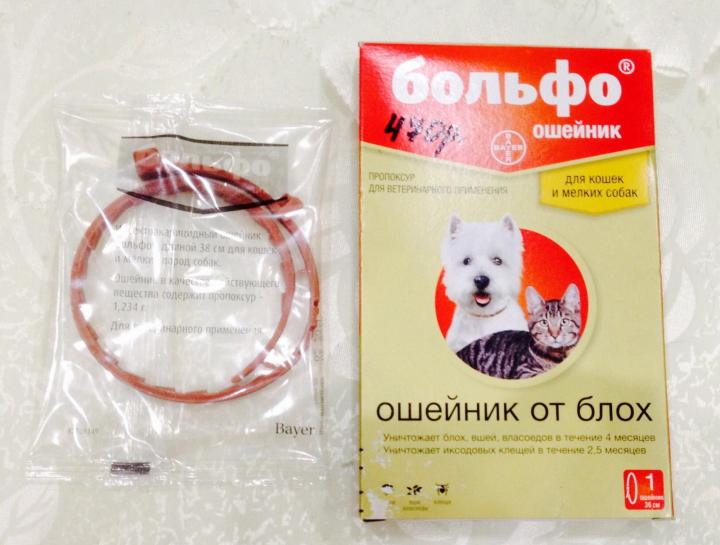

Rules for removing fleas in rabbits
Fleas from such animals should be removed in the same way as from other pets. After detecting parasites, you must first isolate the rabbit from all pets that are in the apartment.To remove these insects from a fluffy rodent, you need to choose only those products that are designed specifically for him. This is due to the fact that the immune system of animals is very specific, so you cannot use drugs that are used to remove fleas in cats or dogs. It is very important to carefully study the instructions before applying this or that product.
If you independently increase the dose of the drug, this can lead to poisoning of the animal or cause itching.
Most often, flea treatment for rabbits is carried out with the help of shampoos. Such products must have an insecticidal effect. The preparations Bolfo and Neguvon are suitable for the procedure. First, you should carefully study the dosage, then put on rubber gloves and distribute the product all over the rabbit's fur. It is necessary to gently and gently rub the shampoo into the skin of the animal. After 10-12 minutes (in no case longer), the drug should be washed off with warm water. Since these products are considered toxic, it is recommended that they be carefully removed from the pet's hairline. At the end of the wash, the coat needs to be combed out with a comb. After the first treatment, the rabbits may still have eggs and flea larvae, therefore, after 8-10 days, it is recommended to re-bathe the animal.
How to get rid of flea eggs
Fleas are fully transformed insects that go through three stages of development. The female does not look for a special place for laying, so the eggs of the parasites will definitely be on the rabbit's fur, litter, floor, etc. The larva hatches from the egg after two weeks. After several molts, it pupates and, being in a cocoon, turns into an adult flea.
To destroy the eggs and larvae, the rabbit treated with insecticides must be removed from the cage and thoroughly disinfested.
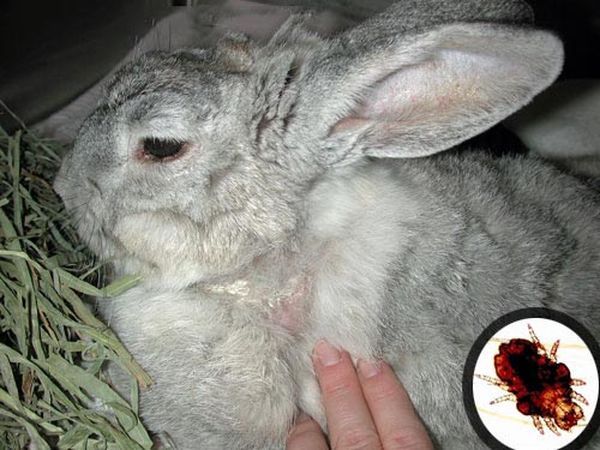

Physical means of disinfection:
- mechanical debris removal, cage cleaning;
- burning metal parts with blowtorch fire;
- scalding with boiling water, steam at a temperature of 100 degrees.
Of the chemical compounds, a 0.5% aqueous emulsion of chlorophos is used to spray the habitat of the animals. At pet stores, you can find BEAPHAR Parasite Spray specifically designed for indoor use.
Can rabbits wear flea collars?
Often flea straps are purchased for rabbits after parasites have been removed. But before such a decision, it is necessary to consult a veterinarian, since collars are not considered the best way to get rid of these insects. They contain poisonous substances and, with prolonged use, often cause intoxication and poisoning of the body.
But you can't do without such accessories when walking in the fresh air. This is the only option when the collar will not harm, but will help repel fleas. Rabbits should only wear accessories before walking and take them off as soon as they return home. Before using the collar, consider the age of your pet. Such accessories must not be worn by animals under 4 months of age.
General activities
Do rabbits have fleas? Yes, two types of parasitic blood-sucking insects can live in the thick wool of these animals. The first species affects all domestic animals, the second can be found only in rabbits. But both varieties carry dangerous diseases.
We suggest you familiarize yourself with: How to find fleas in a cat
A pet can become infected by contact with sick animals, while walking on the street, through equipment or furniture in which flea eggs live. These parasites in a jump cover a distance of up to a meter and settle in fur coats, carpets, rugs and other fleecy surfaces.
What to do if a rabbit has fleas
Fleas are small insects invisible to the naked eye that do great harm to pets. They belong to the class of bloodsucking, parasites and can spread from one animal to another. Rabbits suffer from them no less than dogs and cats, therefore the article below tells how to carry out preventive measures, examinations for fleas. Since if you find full-fledged adult insects, then the disease develops already in the acute stage. And also given detailed instructions on how to remove them from the woolen cover of the eared ones. Do not forget that in addition to unpleasant sensations, itching, fleas can be carriers of serious infectious diseases.
Checking your rabbit regularly
Fleas can be found anywhere on a rabbit's body, but more often they are present near its ears. If the flea infestation is prolonged and severe, the rabbit may develop anemia associated with blood loss. This condition can be fatal for a rabbit. Some rabbits suffer from flea allergic dermatitis, which also causes serious injury.
In order to prevent excessive reproduction of fleas, you need to notice the disease at an early stage. To do this, you must examine your pet at least once a month. This procedure is carried out with a fine-toothed comb. The rabbit is placed on a sheet of paper or on a white towel and combed against the grain. On a white background, black insects, their yellowish-white eggs and dark balls of excrement will be clearly visible.
Of course, in large rabbit farms it is impossible to constantly inspect all the animals. In this case, it is necessary to carry out preventive measures and send newly purchased individuals to a monthly quarantine.
Are there
Many people think that fleas are blood-sucking insects that live only on cats and dogs, but this is far from the case. They invade the skin of any breed of rabbit, including New Zealand Red, Rex and Angora. At the same time, there are two large varieties of parasites:
- The first type affects both cats and rabbits. In this case, it can be transmitted from one type of pet to another.
- The second - lives exclusively on rabbits and does not stay with others.
Fleas have a long life cycle - up to 100 days, as well as a high degree of self-reproduction: about 50 larvae per day. Read about the characteristics of the Silver rabbit breed here.
Eggs are vitally stable, so they can safely be on the carpet, floor, furniture and care items, from which they subsequently fall on the woolen cover and multiply further.
In this regard, it is rather difficult to remove fleas, in addition to therapeutic actions with the animal, they carry out a complete disinfection of the room where it lives.
Preventing rabbit head lice
All preventive procedures can be divided into 2 groups: for decorative domestic rabbits and for agricultural industrial animals.
Prevention of fleas in a decorative rabbit is regular cleaning of the cage and applying drops from parasites every 2 months. Ideally, the drops can be replaced with a collar, which greatly facilitates the care of the animal. The rabbit can be bathed and combed monthly in order to 100% protect it from head lice.
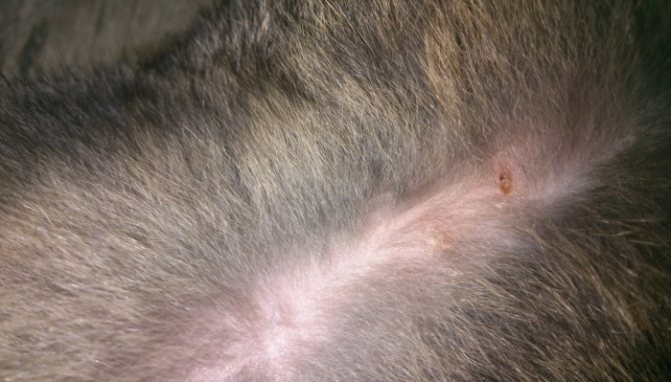

With farm animals, everything is a little more complicated, because you cannot collect drops or collars for a large livestock. Therefore, the enclosures on farms are regularly cleaned: day after day. At the end of the month, all rooms are whitewashed or treated with a blowtorch to kill even flea larvae.
- Where do the blocks in a decorative pet rabbit come from?
- The owners unconsciously bring them from the street on clothes or shoes. Because of the thick and rough skin on a person, a flea cannot live and dies. We don't even notice them, but if there is a big-eared friend at home, they will certainly infect him. The same head lice can be brought in by cats and dogs.
- Can rabbit fleas cause illness in children?
- It is unlikely that the fleas of chordates are not able to live on the human body due to the rough skin and weak hair.
- Are there flea control products that need to be added to the rabbit's drink or feed?
- Yes, there are such drugs, but their effectiveness is a very big question, because of their mechanism of work. The substance is broken down in the herbal juice of the eared eagle and enters the bloodstream. Fleas drinking it from an animal receive this dose of poison and die (as the manufacturer assures). Better to resort to drops and shampoos.
- Rashes and sores have begun to appear on the rabbit's body, although the presence of fleas has not been confirmed.
- Probably it is lichen or the first signs of myxomatosis. If the presence of pests is not confirmed, it is necessary with the animal to go to the veterinarian for treatment.
- Can a rabbit bite if it is tormented by fleas?
- Probably. Due to the constant itching and pain, the animal becomes aggressive and can easily bite its owner, another rabbit or any pet.
Now you know how to understand that a pet is infected with head lice and how to deal with it. Do not hesitate to take preventive measures and keep your animals clean.
Signs of fleas and lice
The signs of bloodsucking are easy to determine at home, without resorting to the help of doctors in veterinary clinics. Several signs indicate that the rabbit is infected:
- The animal is restless behavior, squeals tensely.
- Very often bites something in the coat, itches.
- Fleas are easy to spot on examination. at the withers or along the eared spine.
- In addition to black moving dots, white larvae can be found in the coat, pupae of insects. The latter look like white, greasy grains, often confused with a seborrheic disorder of the integument.
- Also, bright spots appear on the skin, irritation, in the advanced stage, hair begins to fall out in bunches. As if she had been pulled out with forceps or sheared.
Examine the coat with a comb in all directions of the coat to understand the degree of infestation and the number of lice on the rabbit.
With prolonged infection - the rabbit suffers from blood loss, which can develop into anemia, leading to the death of the pet. Also, fleas are carriers of a dangerous and poorly curable disease - myxomatosis.
In addition to examining the rabbit, cells are also analyzed, since flea secretions are easy to notice on the litter, on bright areas of the floor. They look like small, uncharacteristic brown or black eared dots. Learn about the Lop-eared Sheep rabbit breed at this link.
Factors causing the development of coccidiosis
In addition to eczema and dermatitis, fleas are carriers of infectious diseases.
The spine and withers of the rabbit are considered the most vulnerable to bites. After the attack of bloodsuckers, animals suffer from continuous itching, which prevents them from living peacefully. The animals fall into an excited state and constantly comb the affected areas, as with an ear mite, which in no case should be allowed.
We suggest you familiarize yourself with: Features of the appearance of the character and content of cats of the Korat breed
Combing bites can cause:
- extensive damage to the affected areas of the skin, the appearance of long-healing ulcers, sometimes accompanied by the release of pus;
- secondary infection as a result of pathogens entering the bite site.
Often, flea-infested pedigree rabbits are devalued in the market, so it is extremely important for owners to start timely treatment and rid their pet of these pests.
Fleas are also dangerous because they are carriers of myxomatosis in rabbits, purulent conjunctivitis, as well as the deadly viral hemorrhagic disease of rabbits. In addition, the larvae of bloodsucking feed on worms, and if such fleas are swallowed, the animal can become infected with worms.


Infection with coccidosis occurs by contact through food, water or surrounding objects.
Oocysts in favorable conditions are able to maintain viability for quite a long time. Therefore, litter, feeders, drinkers, cages, if sanitary requirements are not observed, are a source of infection.
Once oocysts enter the host organism, they undergo changes after about 7-14 days. Under the action of gastric contents, the membrane is destroyed, and the released spores are introduced into the intestines or liver.
In favorable conditions, the process of formation of new oocysts takes place. When defecating, the eggs of the coccidia, along with the feces, leave the rabbit's body, which contributes to the spread of the disease among the pets.
Sources of infection
The main sources of infection in rabbits are:
- faeces from infected animals;
- infected pets;
- sick rabbit milk;
- insects and rodents carrying oocysts from faeces to food;
- inventory and overalls for farm employees.
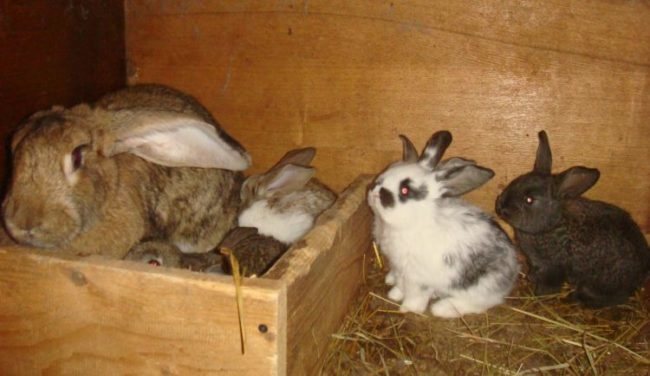

Old, dirty bedding can be a source of disease.


Farm workers do not always adhere to the rules of hygiene, do not wash clothes, do not disinfect cages and equipment, and clean up the rabbitry in bad faith. On such farms, the disease develops very quickly, which can lead to the death of the entire livestock.
How to withdraw
Removing fleas, like worms, is quite troublesome and requires patience. Even when the animal is free of bloodsucking, a course of prophylaxis is carried out for several months. To combat lice in pets, modern veterinary medicine offers many drugs. In this case, the form of release can be chosen the most convenient and comfortable for use.
Anti-flea remedies directed only to insects of the second type are quite rare. Most often, pharmacies sell universal preparations suitable for the hair of cats and rabbits. Since the structure and structure of the hairs and the epidermis are similar, experts recommend using this segment of drugs for the eared ones. Also read about dwarf chickens.
When withdrawing, you must always follow the instructions and prescriptions of the drug, do not exceed the norm, since severe intoxication of the animal can occur. Regularity of procedures is the key to sustainable results.
According to the form of release, drugs can be in the form of drops, shampoos, dry powders and an unconventional, but gaining popularity type - a collar.
Sequencing
In addition to the selection of a suitable drug for the elimination of fleas according to the degree of neglect of the disease, the characteristics of the epidermis and the immune system of the animal, it is always necessary to follow a clear sequence of actions, as well as to carry out in parallel preventive measures, disinfection of the space. And you can learn about the Xin Xin Dian breed of chickens from this material.
- examination of the animal for the number of adults, larvae and damaged areas;
- if you chose shampoo as a means of struggle, then you need to close the windows, to avoid drafts, and prepare a large towel to wrap the rabbit after bathing. Shampoo is washed according to the manufacturer's instructions;
- drops are usually used on the withers, head. The shampoo is foamed and evenly distributed over the entire woolen cover;
Before all insecticidal procedures, rubber gloves are worn to prevent contact with the skin. Due to its severe chemical composition and concentration, it can cause irritation or an allergic reaction.
- the product is kept on the skin for 10-15 minutes, and then washed off with warm water;
- when the indicated time in the drug's instructions ends, the rabbit is combed with a brush, removing dead insects and larvae. The procedure is done with great care, working out every centimeter, running the comb in different directions;
The treatment is repeated after 1-1.5 weeks until the complete disappearance of the larvae and pupae. Also, after each procedure, the comb and other contacting objects are wiped with alcohol wipes or kept in a manganese solution.
Medication
The simplest flea remedy is considered to be a solution in the form of drops. Depending on the composition and concentration, they are used not only as a therapeutic, but also as a prophylactic agent. What to do if a rabbit has lichen this article tells.
Popular among veterinarians and rabbit breeders: Fortline, Advantage.
The drug is applied in the area of the withers so that the rabbit cannot lick off the drug, since the latter has a high degree of toxicity.
Do not wash the rabbit after processing for a couple of days, so as not to reduce the therapeutic effect of the drops.
Drops are reapplied after 1-1.5 months.
The second most popular anti-flea drug is shampoo. The procedures are performed more often, but with a large number of insects, this is one of the most effective methods.
Of the brands of shampoos, Neguvon and Bulfo can be distinguished. The funds are concentrated and they are pre-diluted with water. Repeat the treatment in a week and a half, depending on the severity of the disease.
There are also solutions that do not belong either to drops or to shampoos, for example, Bromocyclen.
Now in veterinary medicine there is such a flea remedy as a collar, it is impregnated with a special compound that repels insects. It is more of a preventive measure than a curative one. Also read about the features of the Hungarian Mangalitsa pig breed here.
The collar is used when walking in the fresh air, transportation, but not for constant wearing. Since the poisons contained in it can cause intoxication in the rabbit's body.
Description
The flea is a small, wingless, blood-sucking arthropod insect with a black or dark brown body flattened on the sides. The bristles that cover the body help to hold onto the fur of the animal and to move. Strong chitinous shields protect against mechanical damage. These insects have three pairs of powerful tenacious legs, with the help of which they move around the animal and jump long distances - more than a meter in length and 30-50 cm in height. The oral apparatus is designed to pierce the host's skin and suck out blood.
In total, more than 2000 species of fleas are known, of which only 4 species parasitize on rabbits. It:
- Pulex irritans - human flea, or common;
- Ctenocephalus felis - feline
- Ctenocephalus canis - Canine
- Spilopsyllus cuniculi - rabbit.
With the naked eye, the differences between insects are not noticeable, but under a microscope it can be seen that different fleas have a different number and shape of spines on the head and body and other features. Although fleas prefer to feed on the blood of an animal of their "own" species, they are able to pass on to other warm-blooded animals. Due to their small size, from 0.5 to 3 mm, they can be difficult to detect.
These insects live not only on the body of the animal. They settle in litter, nest material, burrows, in the ground. Therefore, the treatment of a rabbit from fleas is accompanied by disinfestation of bedding, cages, premises and, if necessary, adjacent territories.
Insect features
Before talking about methods of dealing with a parasite, you need to know what the pest looks like. A flea is a small insect up to 5 mm, its dark brown or black body is compressed from the sides. The bristles located on it help the bloodsucker to strengthen in the animal's fur. A similar function is performed by the ridges on the chest and head of the parasite. The abdomen can grow, as a result of which it can hold up to 10 ml of blood. The flea has no wings, but the presence of 3 pairs of strong and powerful limbs allows the insect to jump high.
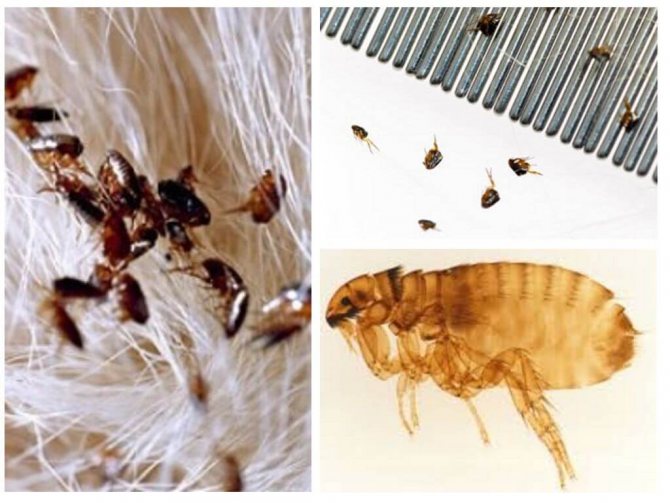

Fleas
Symptoms
Flea infested rabbits become restless. Flea bites cause severe itching, because of this, animals begin to rush and itch constantly.Swelling appears on the skin, the animal scratches the bite sites until it bleeds, wounds form, an infection is introduced, and suppuration begins.
With severe infection, anemia, that is, anemia, is possible. The animal becomes lethargic and inactive, loses weight and eats poorly.
Fleas in rabbits' fur leave excrement in the form of black adhered dots and oblong light eggs, which are easy to spot when examining the animal and comb out with a special comb along with insects. It is convenient to use white paper to better see the falling parasites.
Danger of flea bites
Constant bites exhaust the animal's body, making it more susceptible to colds and viral diseases. Fleas living on a pet can bite a person, spread to other animals - chickens, dogs, cats. They are carriers of brucellosis, pasteurellosis, plague, E. coli and even some types of hepatitis.
The bite site turns red, swells, and itches a lot. Even if the flea did not have time to introduce an infection into the wound, then it is still impossible to exclude the possibility of infection. The animal, disturbed by severe itching, scratches the bite with a dirty paw, which leads to even greater inflammation, which sometimes results in the death of the rabbit.
Treatment
Fleas are ubiquitous insects. Despite preventive measures, flea infestation of rabbits is possible at any time of the year. The symptoms of tick infestation are similar to those of fleas, so it is important to accurately determine the correct diagnosis so as not to be mistaken with the treatment.
A flea remedy for rabbits should be prescribed by your veterinarian. Almost all anti-flea remedies are overly toxic for them, and the body is very sensitive to poisons, so treatment must be carried out carefully so that the animals do not die and remain healthy.
If it is not possible to consult a veterinarian, at your own peril and risk, you can carry out the treatment yourself. What to do if a rabbit has fleas.
It is necessary to use products specially developed for the treatment of rabbits:
- Flea drops for rabbits. They are applied to the withers.
- Flea shampoo. For therapeutic and prophylactic bathing.
- Flea lotion. Spray to lightly dampen the coat.
- Insecticidal solutions. Moistened or sprayed onto the wool.
To get rid of fleas, special drops are used. The agent is applied to the withers so that the animal cannot lick it off and poison itself.
Geraniol - colorless oily liquid, non-toxic fragrant oil. It is used in shampoos and lotions. The animal is processed once a month.
Carbaryl - lotion or shampoo. It is applied 2 times a week for a month.
Neostoazan - in 1 ml. the mixture contains 50 mg. transmix (β-cypermethrin isomers) and 5 mg. tetramethrin. An emulsion that can get rid of insects at a time is prepared immediately before use. For processing rabbits and rooms 1 ml. neostomazan is diluted in 1 liter of water. Spray evenly on the body of the animal. All surfaces of the external habitat are treated.
Bolfo - spray. Processing is done outdoors or in a well-ventilated area. During processing, you should wear protective gloves on your hands, use a respirator or a gauze bandage. It is advisable to wear a protective suit. The animal's coat should be lifted by hand and sprayed until lightly moistened.
Butox 50 - 5% solution of the active substance deltamethrin. For processing an animal 1 ml. the solution is diluted in 4 liters of water. The rabbits are sprayed with a spray bottle. Swallowing of the drug is inadmissible. Easily penetrates the skin and then excreted through the intestines.
Spraying is also used to treat cells, rooms where rabbits live. For this purpose, 1 ml. Butox 50 is diluted in 1.5 liters. water. At the end of the processing, the premises are closed for 2 hours, and after that everything must be well ventilated.During processing, it is also necessary to use protective equipment.
Stronghold - solution for single external use. Dosage: 0.1 ml. 6% solution per 1 kg. weight. It is applied to the withers. After 30 minutes, it is completely absorbed into the skin. During processing, the animals are isolated for 4 hours so that they do not lick each other's fur.
Important! Disinsection of the premises is done simultaneously with the processing of animals
After using the drug for fleas, you can use the following aids:
- Actovegin - ointment, gel or cream for external use. Accelerates the healing of any wounds.
- Levomekol - antimicrobial ointment, used to treat purulent wounds.
These medications help with healing and relieve itching. Rabbits brush their skin less.
In what types are flea remedies available
Today, specialized stores offer various preparations for fleas for cats and dogs, differing in their action, method of use and effectiveness. Parasite remedies are offered in the form of:
- tablets - "Bravecto" (Intervet);
- sprays - Bars (AVZ), Bolfo (Bayer), Frontline (Merial);
- shampoos - Lugovoy (AVZ), Celandine (Ecoprom);
- drops - Rolf Club 3D (Ecoprom); Advantix (Bayer), Frontline (Merial), Praktik (Novartic), Bars (AVZ);
- powders - Celandine (Ecoprom);
- collars - Kiltiks (Bayer), Foresto (Bayer), Celandine (Ecoprom), Rolf Club (Ecoprom).
Means for insects living on the body of an animal can have a deterrent, destructive or complex effect. Most drugs for ectoparasites have a wide spectrum of action, while repelling and destroying parasitic insects. The duration of the protection of agents from parasites depends on the properties and concentration of the main active components of the drug. In modern drugs, different types of insecticides are used that are fatal to fleas, but do not harm the health of the pet and humans.
Before choosing a suitable flea medication for dogs and cats, it is important to consider how old the dog or cat is, the drug is required for prophylaxis or treatment, and what effect is expected from it. Thus, a certain situation should be considered:
- kittens and puppies that are 1 month old are best treated with shampoo;
- a collar or drops on the withers should be used as a prophylactic agent against parasites;
- collars and parasite drops are also used when the cat or dog has few fleas;
- effective sprays and shampoos are suitable for the destruction of highly multiplied fleas;
- the collar on the animal must be worn when the pet often visits the street.
If the animal is pregnant or nursing cubs, veterinarians recommend caution in the choice of antiparasitic agents. The use of these funds is possible when the animal is severely suffering from parasites. In this case, your veterinarian may recommend flea drops or shampoos.
Prophylaxis
For the prevention of flea infestation, contact of healthy animals with infected ones is excluded.
In agricultural rabbits, it is necessary to regularly clean the cage and change the litter in it, and carry out preventive disinfestation of the premises.
When a decorative rabbit lives in a house or apartment, it is necessary to periodically vacuum the carpets, more often to clean the house. Fleas' favorite spots are carpets, cracks in the floor and walls. Basements, upholstered furniture
For domestic cats, dogs, flea collars are put on for prophylaxis. For rabbits, the preparations used in collars are overly toxic, therefore collars are contraindicated for them. If you wear it, then only for a short time, for a walk in the yard, where there is a risk of collecting fleas.
Preventive measures
- Timely examination of the hairline;
- Washing with anti-flea shampoos;
- General cleaning of the house;
- Flea injections;
- Limiting contact with other animals.
The best treatment is flea prevention. In order to prevent the appearance and spread of bloodsuckers not only in the rabbit, but throughout the house, it is recommended to take the following measures:
- Regular cleaning will help create unfavorable conditions for the appearance and breeding of fleas: as often as possible, you should clean the rabbit's cage and change its litter.
- You should periodically inspect your pet and take care of its fur.
- You also need to make sure that other pets in the house are free of fleas.
- Cleaning the entire room is equally important.
If you follow these recommendations, the rabbit will not get fleas, as a result of which it will be possible to avoid the hassle and problems associated with this. After all, prevention is perhaps the easiest method to control your pet's health. We must not forget that we are responsible for those we have tamed. If, nevertheless, fleas are found in a pet, it is necessary not only to destroy the parasites from him, but also to process the apartment.
Flea-borne diseases
In addition to bites, irritation, itching and an allergic reaction, fleas spread infectious diseases. Most often, rabbits are infected from fleas with myxomatosis and viral hemorrhagic disease of rabbits (VGBD).
Fleas also carry helminth eggs. Therefore, biting or licking insects from wool, animals swallow eggs and become infected with worms.
By spreading diseases and parasites, fleas can cause great harm to your pets, so you need to take measures in advance to protect against these insects.
{SOURCE}
Flea threat to humans


The human body is capable of not responding to insect bites. Most often, children and older people suffer from the actions of parasites. Babies are most sensitive to bites. They have allergy-sensitive individuals. Pets do not always show the presence of blood-sucking insects by their behavior. Therefore, their appearance on the human body speaks of paying attention to the health of the animal. For humans, these insects are very dangerous. They can be carriers of viruses and causative agents of the following diseases:
- Hepatitis C and B;
- Escherichia coli;
- Typhus;
- Pasteurellosis;
- Brucella;
- Plague stick.


